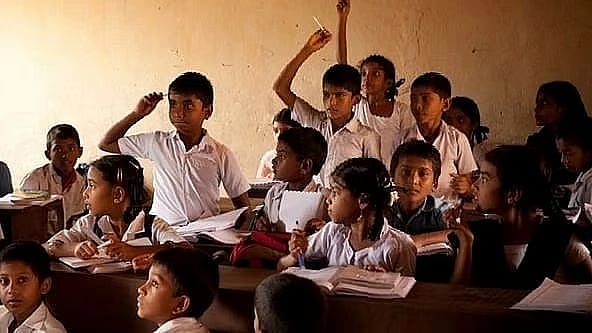It was on April 17 that Jet Airways had run out of funds, and its operations had come to a grinding halt. Jet, a full-service airline, was competing domestically head-on with highly agile and viciously competitive low-cost carriers (LCCs) which had mastered the art of cost control. The cost per seat-km was much higher for Jet than for any of its LCC competitors. Indeed, these were about the very highest in the Indian airline industry. On the other hand, the salaries that the Jet staff enjoyed were also the highest in the Indian airline industry. That was not good economics. The airline had been going steadily downhill for some time and, when the consortium of lenders declined to give an emergency funding of Rs 983 crore it had “temporarily” suspended operations.
Jet Airways seemed to have undertaken some innovative financial practices. As a result, the Serious Fraud Investigation Office of the Corporate Affairs Ministry, the Enforcement Directorate of the Finance Ministry, the Economic Investigation Office of the Ministry of Company Affairs, the Registrar of Companies, the Income Tax Department’s Investigation Wing, among others, talk of “irregularities”, “discrepancies”, “siphoning off of money”. “fund diversions” and the like – a measure of the airline’s steadily increasing desperation to stay afloat.
There was nothing unexpected about the end outcome. Jet had been defaulting on payments for months before it shut down. Among the lenders, only HDFC was smart enough to place the airline’s Mumbai office on the block – at a reserve price of Rs 245 crore. They may be among the very few organisations to recover at least a part of their money loaned to Jet. Among others, the Airports Authority of India (AAI) had sealed Jet’s offices at four domestic airports – but could do little more.
On the other hand, a consortium of public-sector banks, led by SBI Caps, wasted valuable time looking for investors who could turn the airline around. Sadly, their actions were based on purely common sense, rather than technical, commercial, financial or even legal considerations. These potential investors had included the Tata group, TPG Capital, National Investment and Infrastructure Finance, Indigo Partners, and others. All of them came – and went – without any worthwhile development taking place.
Etihad Airways, which had obtained a 24 per cent stake in Jet, at a cost of $ 379 million, was more keen on protecting its own investment than on turning Jet around. They wanted to have a partner to do that. They also wanted the lending banks to take an 80 per cent “hair-cut” – meaning write-off of 80 per cent of their loans, totalling Rs 8,500 crore. They also wanted Naresh Goyal to step down – which he did. Additionally, they wanted other investors to offer a very large part of the re-capitalisation required to get the airline in airborne again – while minimising their own investment. That was the most outrageous wishful thinking.
More recently, the Hinduja group had asked investment bankers – led by SBI Caps – for a due diligence of Jet. Frankly, one should doubt those banks’ qualifications for undertaking such a role. A respected foreign consultant would have been much more helpful.
The Hindujas seem to be groping around. Also, they have had no worthwhile previous airline industry management experience to guide them. It increasingly appears that nothing much can be expected of them.
There was only one way for the banks to turn around Jet Airways and, in the process, to recover their money. They should have replaced the Jet management as soon as they realised that the airline was in a condition of free fall – which must have been well in advance of its collapse – and appointed a globally respected turnaround specialist. These people are worth their weight in gold, but have a good record of rejuvenating airlines in a state of terminal decline, and saving the lenders’ money. It should be emphasised that there are no such airline management consultants in India who can do that job. Also, this turnaround process needs to be initiated well before the airline’s operations come to a halt. Naturally, the banks would also have had to continue to provide financial support to keep the airline operational.
Instead, the slothful banks, with zero experience in such matters, decided on a policy of drift. That was not only fatal to the airline, but will also hit the banks very hard. They may now recover very little of their money – actually the tax-payer’s money.
Jet also owes money to the aircraft leasing companies (a surprisingly large part of their fleet was on lease), the AAI, the aviation turbine fuel (ATF) suppliers and a whole lot of other creditors. That brings us to the final point. What are the chances of jet Airways being turned around and made operational again? Absolutely nil.
Jet, which once had a fleet of 119 aircraft, now has less than ten aircraft in their possession – all except one being turboprop-powered feederliners. The others were expeditiously repossessed by the leasing companies. Almost all senior executives have quit the airline. With less than the mandatory three board members remaining, they cannot even approve the FY 19 results. The cockpit crew (pilots) and cabin crew were cherry-picked by other Indian airlines at much lower salaries than they used to get at Jet. Those that have still not obtained alternate employment are in a sad situation. They are told that their pending salaries, not paid for the last several months, will be paid only after the airline starts flying again. Not a chance that it ever will. The manner in which the airline’s loyal staff have been left to fend for themselves is very sad. Jet Airways was known to pay its personnel well. Ironically, that may have been one of the causes of its collapse.
Jet’s traffic rights to various destinations – local and global - were re-distributed by the Government to other Indian carriers. Their parking rights at various airports, both in India and abroad, have also been lost. In short, virtually nothing remains of the original airline with which to restart services. The window of opportunity for any saviour to restart the airline closed long back. A point has already been reached where it would cost much less to start a totally new airline, with none of Jet Airways’ problems, than to re-start operations with Jet Airways. The Jet Airways name has now passed in to history.
-Hormuz P Mama
The writer is a noted aerospace industry analyst and author of the book “Civil Aviation in India: Challenges and Prospects” (Syndicate:The Billion Press)










